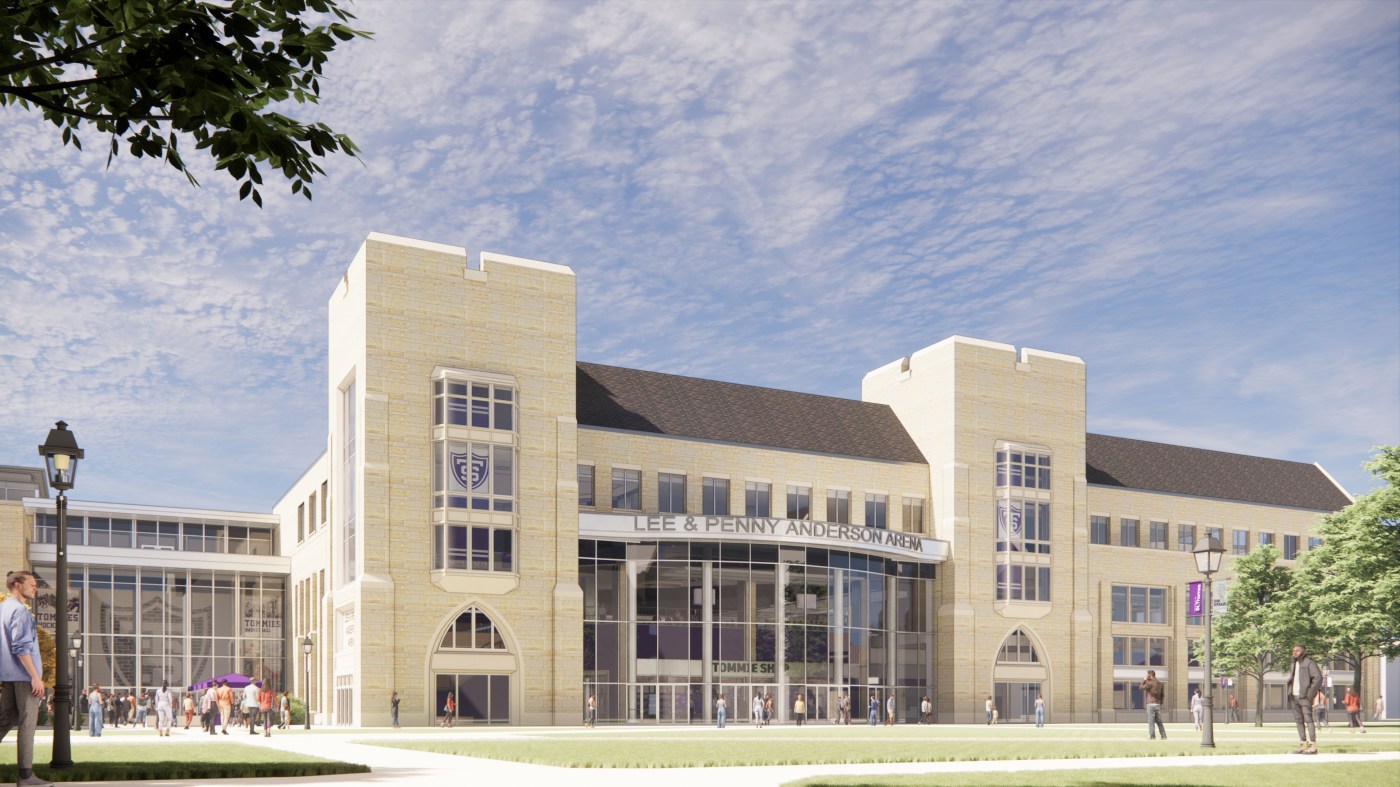
Opponents of University of St. Thomas arena appeal to St. Paul City Council
Residential neighbors opposed to a 5,500-seat Division 1 hockey and basketball arena already under construction at the University of St. Thomas in St. Paul are taking their case to the St. Paul City Council.
The residents, who have formed a nonprofit together under the title Advocates for Responsible Development, filed a 51-page appeal this week of an arena site plan that was approved by city planning staff in April and later supported by the St. Paul Planning Commission. On May 10, the Planning Commission denied two separate appeals of the staff-driven site plan approval.
The city council likely will take up the nonprofit’s latest appeal on June 5, and construction — which had been paused in April — has once again been halted until the council’s decision is made.
The opponents have predicted heavy traffic impacts and raised environmental concerns about carbon emissions and river run-off, though the Planning Commission pointed out that relocating hockey games from leased ice time at St. Thomas Academy in Mendota Heights would reduce driving for students, who are now required to live on campus their first two years.
Those environmental benefits could be offset, however, by suburban alumni and other visitors driving onto campus, according to residents.
Daniel Kennedy, an attorney who lives near the south campus, said in an email this week that the university’s entry into the National Collegiate Hockey Conference “will sharply increase attendance. … Several NCHC teams average greater than their respective seated capacities, meaning they routinely have standing-room-only crowds. Adding University of Minnesota-Duluth, St. Cloud State and North Dakota State to the schedule will surely pack the house.”
Setback requirements from the seminary in question
In their appeal, the Advocates for Responsible Development also have pointed to requirements embedded within the city’s conditional use permits governing construction on campus.
Those permits were published in 1990, 1995 and 2004, and taken together with the city’s zoning code and the state’s Mississippi River Corridor Critical Area regulations, have formed what some Planning Commission members have described as a complex series of overlapping goals and expectations for on-campus development.
The arena opponents maintain that the permits require at least a 50-foot construction setback from the university’s seminary property, and more likely 70 feet based on a formula that takes into account building heights.
Pointing to language in both the 1990 and 1995 permits, university officials said this week that no setback is required from the seminary’s property line as long as the two campuses continue as institutional uses and blend together, functioning as one campus.
Zoning code
The appeal notes, however, that the city zoning code surrounding setbacks for university construction are more stringent than the permits, meaning the university still needs to request a special zoning variance: “A conditional use permit is a vehicle to place limitations on an otherwise permitted use; it is not a vehicle to permit what would otherwise not be permitted.”
The permits also require that a loading drive that currently exists between Goodrich Avenue and the former Binz Refectory building must be removed, eliminating vehicular access from Goodrich to any of the university buildings on the south campus, if the refectory undergoes major remodeling work. “St. Thomas substantially remodeled the basement and first floor of the Binz Refectory in 2022-23, yet has not removed the drive from Goodrich Avenue to the Binz Refectory as required,” reads the appeal.
City planning staff have said the Goodrich Avenue question needs separate consideration and is not germane to the arena discussion.
The latest appeal to the city council is separate from a legal case before the Minnesota Court of Appeals, which argues that the city needs to conduct more rigorous environmental analysis than what was presented in the arena’s Environmental Assessment Worksheet last summer.
Related Articles
Minnesota goes all-in on Anthony Edwards’ ‘Bring ya a**’ slogan
Who has the best public parks in the nation? Study: The Twin Cities — and Washington, D.C.
St. Paul student with Down syndrome receives national anti-bullying award
Bandwagon? ‘It’s a party bus’: Even hockey fans on board with the Timberwolves
Amtrak launches the Borealis, a second daily train between St. Paul and Chicago


